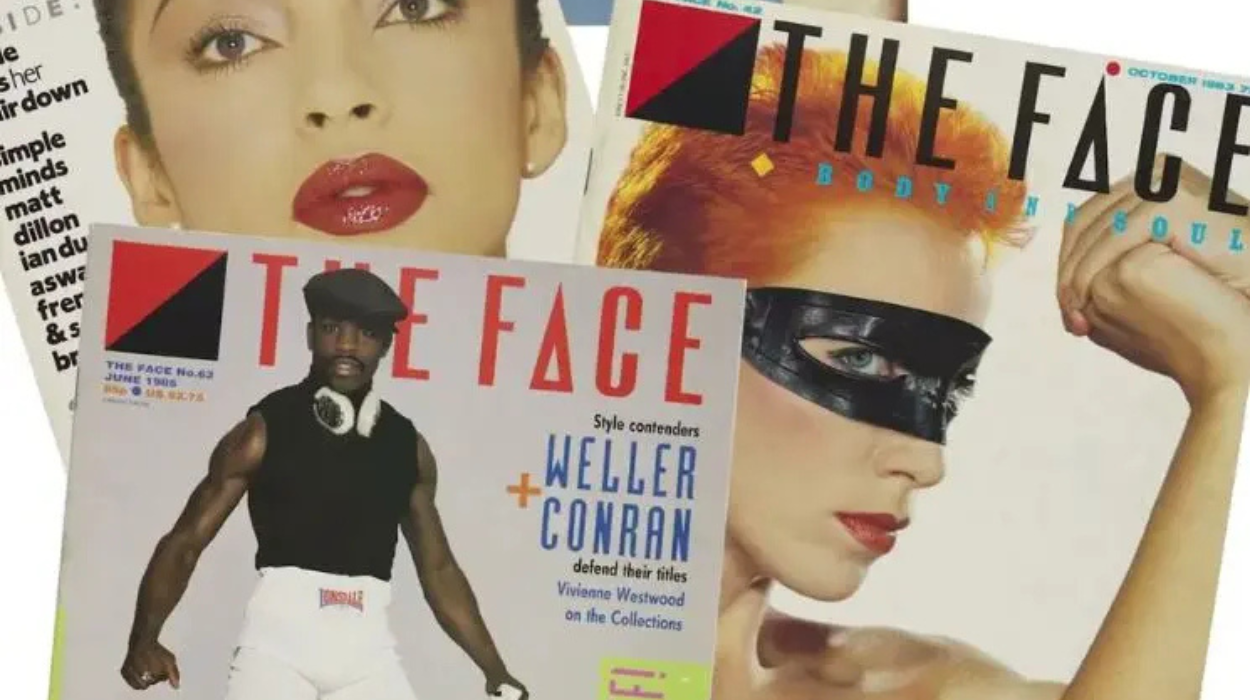
Culture Shift: The Face Magazine Unveiled at the National Portrait Gallery
The Face Magazine, a pioneering force in British media, is being honored with an unprecedented retrospective at the National Portrait Gallery in London. This exhibition delves into the magazine’s transformative role in shaping visual aesthetics and representing youth culture during the 1980s and 1990s. Known for its bold approach to fashion, music, and underground culture, The Face became a cultural touchstone that influenced an entire generation.
Founded in 1980 by Nick Logan, The Face became more than just a fashion magazine; it was a cultural phenomenon. It introduced readers to a new way of seeing the world—blending pop culture, rebellious youth movements, and cutting-edge fashion in ways that had never been done before. The exhibition, which runs at the National Portrait Gallery, takes a deep dive into the magazine’s role as a visual and cultural incubator, showcasing how it reflected and influenced the rapidly changing dynamics of youth identity.
Read Also: Modesty Blazes: Inside the Multi-Million Euro Industry Selling ‘Conservative’ Clothing
Celebrating a Generation of Iconic Photography
This captivating exhibition brings together the works of over 80 renowned photographers who helped shape The Face’s distinctive aesthetic. Among them are Sheila Rock, Stéphane Sednaoui, Corinne Day, David Sims, Elaine Constantine, and Sølve Sundsbø—each of whom played a pivotal role in creating the magazine’s iconic images that still resonate today. Their photographs capture not just the fashion of the time, but also the spirit of a generation, the attitudes, and the raw energy of youth.
Through carefully curated images, visitors are transported into the world of The Face, where fashion was not just about clothes, but a statement. The magazine’s pages were filled with dynamic portraits of emerging stars, the coolest musicians, and the most avant-garde fashion designers. It was a place where subcultures and mainstream culture met, where the margins of society were celebrated, and where youth rebellion was not just encouraged, but glorified.
The Intersection of Music, Fashion, and Subculture
At the heart of The Face was its ability to seamlessly intertwine fashion, music, and cultural movements. The magazine’s bold, cutting-edge visual language set the tone for a generation of young people who were redefining what it meant to be stylish, cool, and relevant. It chronicled the rise of musical icons, from the post-punk era to the emergence of Britpop, while also showcasing the underground fashion scenes that were pushing boundaries.
Perhaps most notably, The Face was instrumental in documenting the birth of rave culture, the rise of hip hop, and the grunge movement—all of which had a lasting impact on British and global youth culture. It wasn’t just a magazine about clothes—it was about identity, attitude, and the cultural zeitgeist of the time.
A Visual Revolution
The Face magazine’s contribution to fashion photography is undeniable. With its bold layouts, experimental photography, and the constant push to break the conventional rules of print media, it became a true innovator. The magazine was a visual laboratory, continuously experimenting with how to present images in ways that hadn’t been done before. Through striking photography and daring art direction, The Face redefined how magazines could influence the way people viewed themselves and their world.
From close-up portraits of celebrities to avant-garde fashion spreads, The Face brought a sense of gritty realism to its pages, which contrasted sharply with the polished, commercialized fashion magazines of the time. It was raw, authentic, and deeply tied to the cultural movements that were shaping the world outside of the glossy pages of mainstream media.
The Legacy of The Face
What makes The Face so significant is its ability to transcend the world of fashion. The magazine captured the essence of a moment in time—when youth culture was rebellious, diverse, and unapologetically bold. It created a space where individualism thrived, and where new voices, new movements, and new identities were given a platform. The Face was a blueprint for how magazines could serve as powerful vehicles for cultural expression, helping to shape public discourse and redefine what it meant to be young and stylish in an ever-changing world.
The retrospective at the National Portrait Gallery is not just a celebration of a magazine but an exploration of the cultural shifts that took place during a pivotal era. The exhibition highlights how The Face became a mirror to the social, cultural, and political changes of the 1980s and 1990s, giving viewers a chance to reconnect with the spirit of those years and understand the magazine’s role in influencing youth identity.
An Immersive Experience
For visitors to the National Portrait Gallery, the exhibition offers an immersive experience into the world of The Face, with a rich selection of visual works that span the magazine’s 24-year run. The show is not just about fashion—it’s about the essence of an era and the way a magazine helped to frame and define it. It’s a celebration of bold photography, new ideas, and the youth who helped shape the modern cultural landscape.
In a time when youth culture and style are constantly evolving, The Face remains a powerful reminder of how one publication changed the way we see fashion, music, and identity. Its legacy continues to influence the visual and cultural landscape today, and this retrospective offers a unique opportunity to appreciate its lasting impact on the world.
This article is originally published on: lepetitjournal



